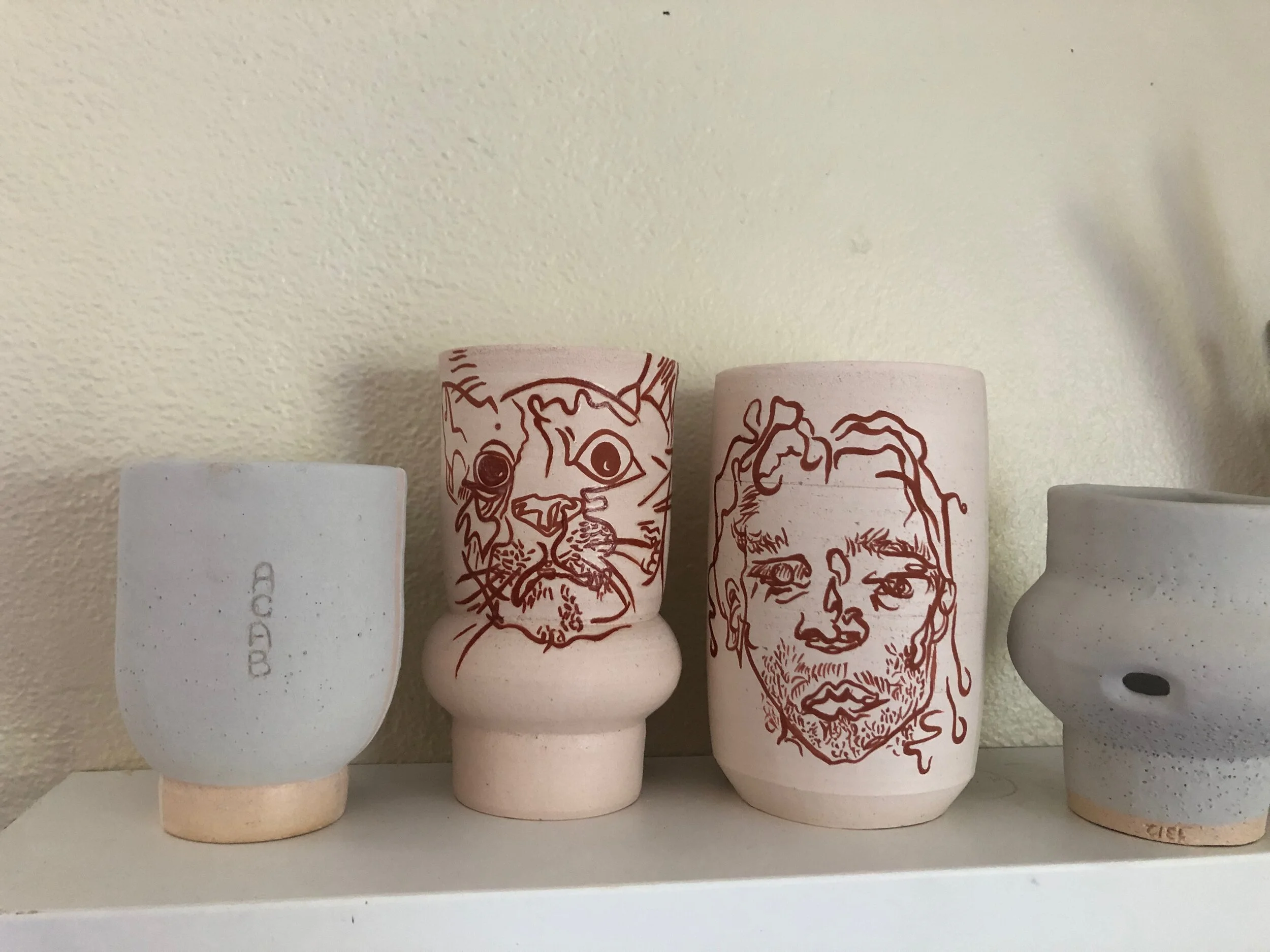The Basics
First I wedge the clay into the balls that will later form into a vessel. The vessel while drying, travels through the wet stage, then the leather hard stage. Once I have thrown a clay baby, I cover my piece/s intermittently throughout the week while they are drying, to prevent cracking due to the clay shrinking too quickly.
Once a vessel is of leather-hard consistency (right in the middle of wet and dry), it is ready to trim! I throw it back on the wheel and use my carving tools to make sure the shape is one that I like. This is the part where you can put all of your details in and really make your angles sharp, my favorite part :). after I’m satisfied with the shape, I smooth/burnish the clay surface with a stone or sometimes my fingernail :,)
once it is trimmed it is ready for its first firing, once those babies are fired I will then paint wax where I want the raw clay body to be showing. The wax dries and acts as a glaze repellent (a similar chemical reaction to when you mix water and oil), the vessel then takes a dip or two in glaze, then it’s ready for its final firing !
Reimagining Beans the Cat
this is beans and I was asked to make a mug with his face on it :’)
First, I drew my contour of beans the cat onto tracing paper. I then cut out a piece of clay-friendly transfer paper, placed the drawing of beans on top, taped the illustration down oton my piece, then traced the lines with a pencil (making sure not to push through the paper, pushing just enough to make a small indent in the clay). After my image has been copied onto my vessel, I can then follow the lines with underglaze to create the painting you see as the end product.
This is how I track my progress/how many coats of underglaze i’ve painted so far if i have to walk away from a project for a bit. It is nearly impossible to tell which has two coats and which has one! This is a helpful tool to make sure the opacity of the lines stay consistent.
the Beans mug after it’s first firing and before being waxed and glazed, then fired again!
My Process
a wiggle mug pre-glazing, waxed and ready to dip!
Disability & Ceramics
My life contains hurdles that come along with being disabled/chronically ill, so my ability to throw pottery depends on my energy levels that day, whether or not I have an injury, or if I have a flare up in my disability.
In recent years I have explored the art of accommodation, with a dedicated focus on maneuvering ways of creating in the midst of the disabling seasons of my life. I countlessly must recalibrate expectations for what mediums are accessible to me—what’s possible physically, as well as what actually feels expressive.
From this act of wiggling through this life, I’m constantly challenged to balance what’s possible, and what’s feeding me to create. Through this juggle, I fall in love with different mediums, I discover new mediums, and I am pushed to explore the unfamiliar within ceramics (a medium I’m comfortable enough in to get stagnant in).
Blind Contour Vessels
I mainly follow the same steps I would if I were making any ol’ vessel, except I do add a few more steps in here and there. a little more prep involved for these babies…
I will take the freshly trimmed vessel before it goes in to get fired, and paint my pre-determined illustration on with one of the tiniest brushes one can buy! Once I have painted on 2-3 coats of the underglaze, I send it in for it’s first firing.
After it is bisque fired, the vessel becomes bisqueware, ready to wax and glaze. with the same small brush dipped in liquid wax, I trace over the linework I have already painted on. The wax dries and acts as a glaze repellent (a similar chemical reaction to when you mix water and oil), allowing the lines to remain visible after I dip the piece to glaze.
I dip in the glaze, clay baby gets fired in the kiln, and out comes a beautiful ceramic ware with one of my blind contours on it!
Making the aj mug
The AJ mug with two coats of underglaze painted on before going in for it’s first firing
complete and ready to be shipped!











